Annual Growth Rings on Trees – What Tree Removal Reveals

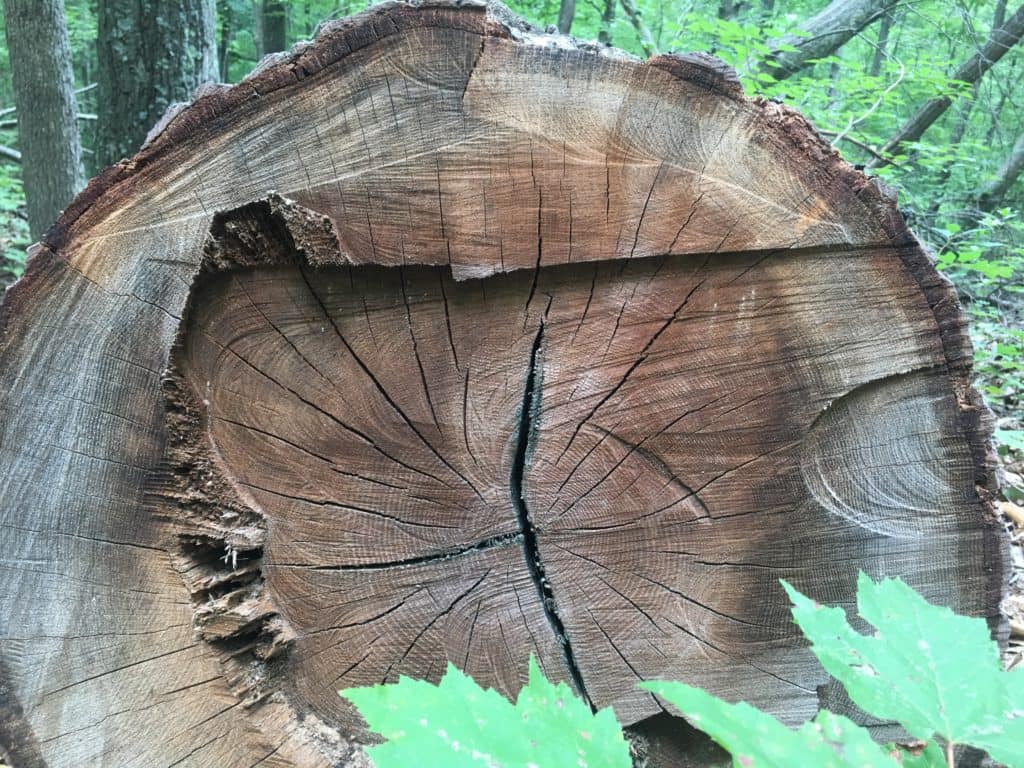
Like most things in nature, trees have a specific way of adding growth rings. Growth rings are only added during the growing season. During the winter, the tree is dormant and doesn’t increase in diameter. The first wood cells laid down on the ring are usually lighter in color than wood laid down at the end of the growing season. That wood is darker in color and the cells are smaller with thicker cell walls. The oldest rings are towards the center of the trunk and the newest rings are on the outside layer closest to the bark. Only the outer 1.5-7.5 cm of growth rings are alive. The remainder are inactive and a dead part of the tree. This wood is called the heartwood. One of it’s major functions is to provide structural support for the tree.
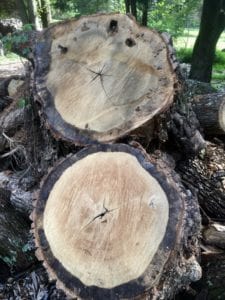 Cross section of a Chestnut Oak tree that fell over and was removed in McLean, VA. It has about 300 rings. The photo clearly shows the outer most rings that are alive vs. the dead heartwood.
Cross section of a Chestnut Oak tree that fell over and was removed in McLean, VA. It has about 300 rings. The photo clearly shows the outer most rings that are alive vs. the dead heartwood.
You can count the rings, and get a pretty accurate estimate of the tree’s age. Pretty cool huh? A.E. Douglass invented a cool technique to use tree rings do gain knowledge about past climate changes. Dendrochronology is the science of dating and studying tree rings. Using this data, in conjunction with other data, can provide a way to recreate prior events in a specific area.
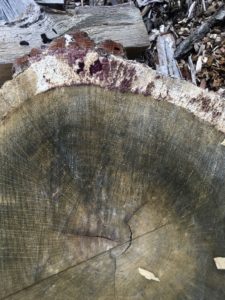 Cross section of a dead standing Oak that was removed from McLean, VA. The outer most layers of rings are dead and harboring decay inducing pathogens.
Cross section of a dead standing Oak that was removed from McLean, VA. The outer most layers of rings are dead and harboring decay inducing pathogens.
Rings on a tree indicate more than just the tree’s age. The size and shape of the rings can give clues to environmental changes that impacted the tree’s growth. Narrower rings may indicate years when growth was minimized due to poor weather conditions, lack of sun, physical damage to foliage, fire or drought. Usually, the inner most rings are wider and more vigorous in size compared to the outermost rings.
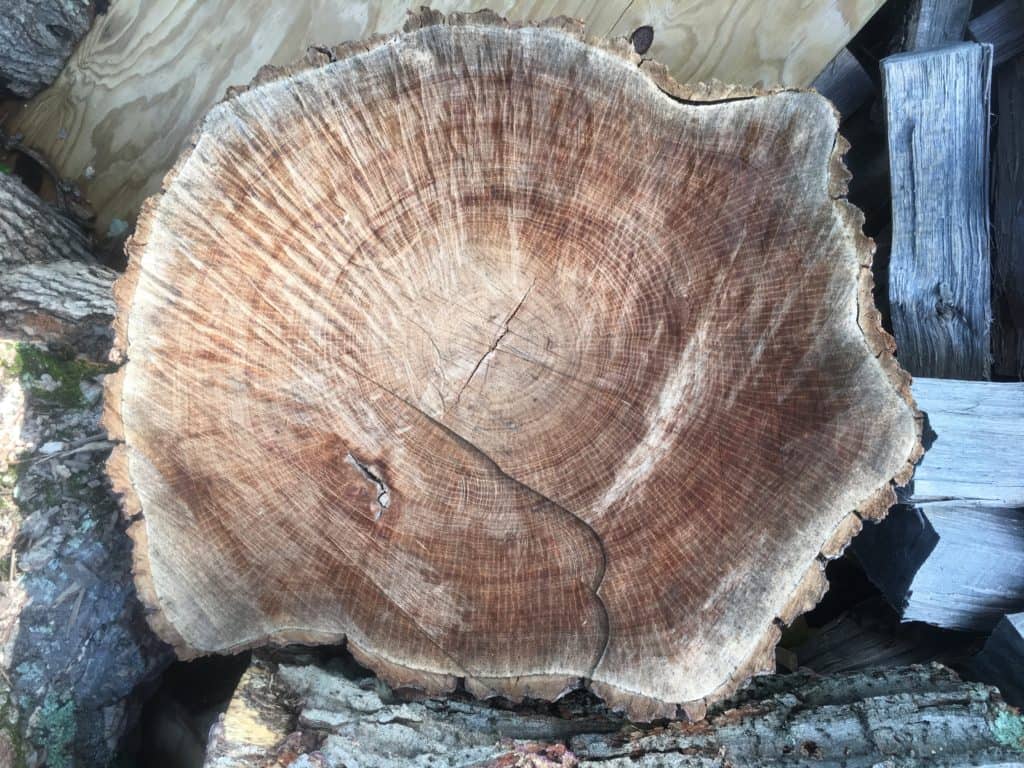
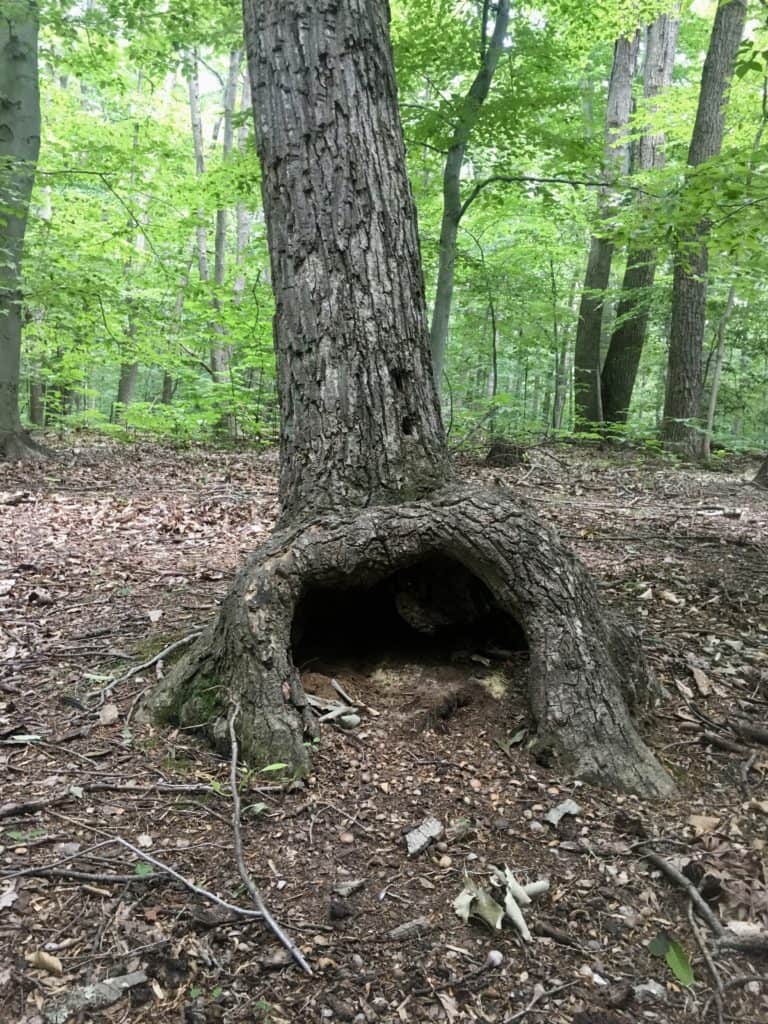
References:
Forest Academy – Annual Growth Rings
Laboratory of Tree-Ring Research
Lost your house keys? Locked keys in the car trunk? Locksmith emergency situations can be overwhelming, but with your local 24/7 Locksmith Finder just minutes away, you won’t have to face it alone.